 LOUISIANA DEPARTMENT OF ENVIRONMENTAL QUALITY | Secretary Courtney J. Burdette
LOUISIANA DEPARTMENT OF ENVIRONMENTAL QUALITY | Secretary Courtney J. Burdette
 A DEPARTMENT OF THE STATE OF LOUISIANA
A DEPARTMENT OF THE STATE OF LOUISIANA
Program Description
In response to statutory requirements of the federal Clean Air Act Amendments of 1990, the Louisiana Legislature (by Act 576 of the 1999 Regular Session) authorized a low enhanced Inspection and Maintenance (I/M) program for the control and abatement of motor vehicle emissions in the five-parish Baton Rouge ozone nonattainment area. Only vehicles registered in Ascension, East Baton Rouge, Iberville, Livingston, and West Baton Rouge parishes are subject to this rule.
The emissions testing, which began on January 1, 2000, is performed as a part of annual safety inspections on vehicles that are gasoline-fueled and have a gross vehicle weight rating (GVWR) of 10,000 pounds or less. Currently, the annual safety and emissions inspection consists of inspecting the vehicle's safety equipment, a visual anti-tampering check of the emissions system, and a gas cap integrity test. In addition to the above requirements, On-Board Diagnostics (OBD II) system testing was implemented in July 2002.
Enforcement of program provisions and collection of fees for the vehicle I/M program is governed by the Department of Public Safety and Corrections (DPS), Office of State Police, Transportation and Environmental Safety Section, with LDEQ providing oversight, data collection support, and liaison activities. Pursuant to R.S.32: 1306 (C), DPS has promulgated a rule (LAC 55:III.801-835), which implements the requirements of the vehicle I/M program.
Air pollution comes from factories, businesses, consumer products, cars, trucks and buses. Pollution from vehicles causes two of our worst air pollution problems, smog, or low-level ozone, and carbon monoxide.
Ozone is a colorless gas, which is composed of three oxygen atoms linked together. When found in the upper atmosphere, it is a natural barrier to the harmful rays of the sun. When found at ground level, it can be a hazard to the health of humans, animals and plants.
Ozone is formed when volatile organic compounds (VOCs) and nitrogen oxides (NOx) react during a warm, sunny day. Industry, gasoline fumes, vehicle exhaust, chemical solvents, and natural resources generally release VOCs and NOx which are known to cause ozone at ground level .
Ozone affects ones' health by damaging lung tissue and making them more susceptible to infections. Ozone is also known to aggravate already existing health problems, such as asthma, heart disease and emphysema. It can also inhibit the growth of plants, cause damage to crops, crack the seal of rubber and adhesives, and cause dyes to fade.
On days that ozone levels are high (hot, summer days, with no wind), residents should try to reduce the amount of time spent outdoors and should avoid most outdoor exercise. People with asthma or other respiratory problems should be especially careful of exposure on bad days. Information on ozone levels on particular days can be obtained from the LDEQ Air Quality Monitoring website https://airquality.deq.louisiana.gov/. Other ozone information can also be found at EPA's website https://airnow.gov.
Carbon Monoxide (CO) is a colorless, odorless, poisonous gas. A product of incomplete burning of hydrocarbon-based fuels, carbon monoxide consists of a carbon atom and an oxygen atom linked together.
Carbon Monoxide forms when there is an incomplete combustion of fuel and is emitted from the tailpipes of vehicles. When vehicles are not tuned well, the air supply in the car is restricted during starting and incomplete combustion occurs. Two-thirds of the existing CO emissions found in the air are caused by transportation sources.
Carbon Monoxide interferes with the blood's ability to carry oxygen to the brain. CO can slow reflexes and affect thinking skills. Pregnant women and people with heart or lung disease are particularly at risk. In high concentrations, carbon monoxide kills. More information about carbon monoxide and other air pollutants can be found on the EPA page at http://epa.gov/air/urbanair/6poll.html.
Out of State Vehicle Emissions Test
Testing reciprocity provisions have been made for vehicles from other states’ I/M programs. These provisions allow vehicles from EPA approved I/M program areas to receive the required emissions testing in another I/M program area. If your home state requires an emissions test for a vehicle that is currently located in Louisiana, the testing may be performed by any official Motor Vehicle Inspection (MVI) Station in the Baton Rouge ozone nonattainment area during normal inspection hours. See the list of Qualified Inspection Stations for a station located in Ascension, East Baton Rouge, Iberville, Livingston, or West Baton Rouge parishes to have the test performed. A Vehicle Inspection Report (VIR) is available as the official test record. For more information, contact the Louisiana Department of Environmental Quality I/M Section at IMProgram@la.gov.
NOTICE of Repair Form Requirements
Currently, motorists whose vehicles fail the emissions portion of the annual inspection receive a Vehicle Inspection Report (VIR) describing the reason for the failure, a Repair Form and a list of failure procedures.
Effective December 1, 2006, a completed Repair Form must be provided to the station prior to vehicle retest. The retest is free if the vehicle returns to the original inspection station within 30 days of issuance of the temporary sticker. If the vehicle is presented for a retest after the 30 day time-frame or goes to another station besides the original one, the motorists will be subject to paying the $18 inspection fee. In either case, the inspector will not be able to proceed with the retest for an emissions failure unless the completed Repair Form is returned.
Motor Vehicle Emissions Inspection Challenge Station
Baton Rouge Community College (BRCC) Automotive Center
2115 North Lobdell, Baton Rouge, LA 70806
Hours of operation:
Monday - Friday
8:00 am - 4:30 pm
(225) 216-8586
Challenge Station Feedback Survey
Useful Links
Other Motor Vehicle I/M Solutions
For more information or questions, please contact:
Louisiana Department of Environmental Quality
Air Planning and Assessment Division/Air Planning Section
E-mail: IMProgram@la.gov
Either of the following:
Troy Wessinger (225) 219-3570
Tylon Kennedy (225) 219-3571